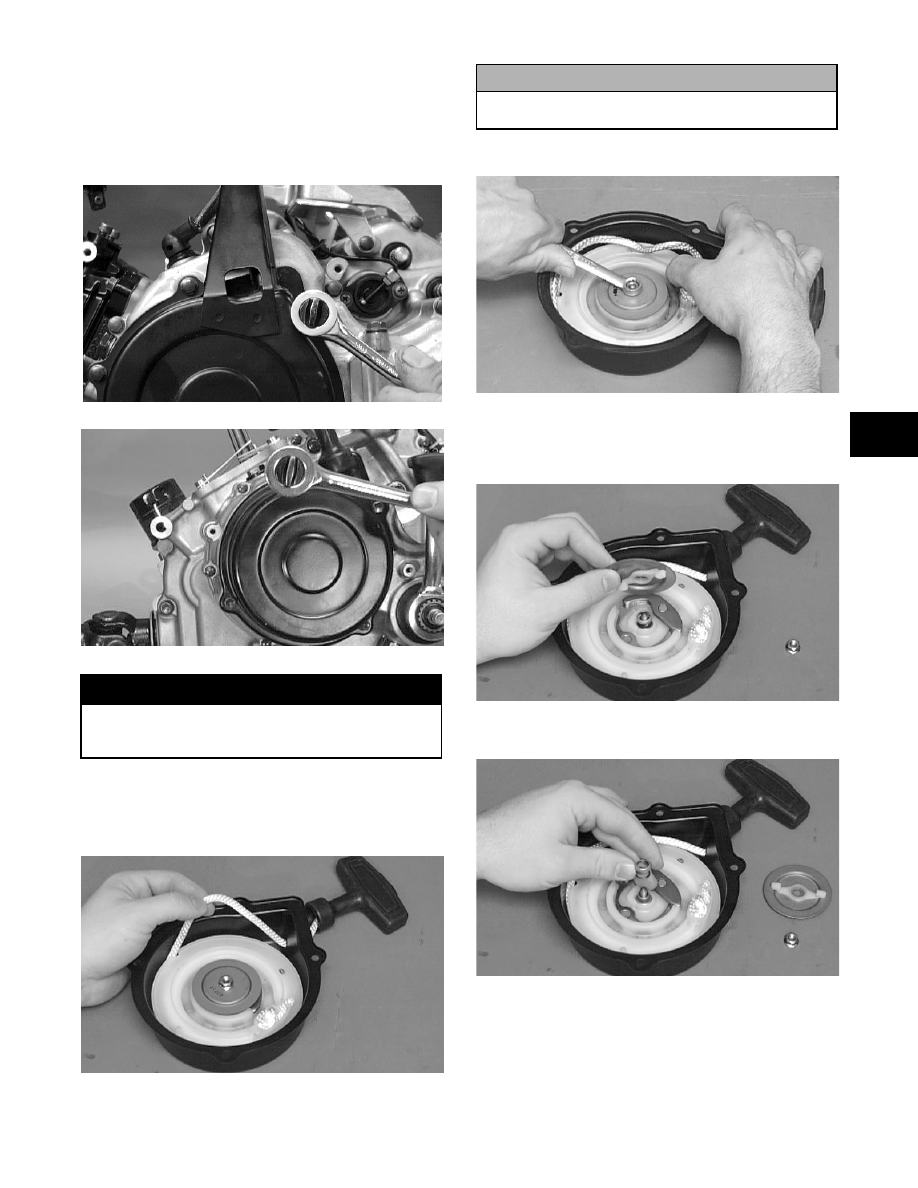ATV Arctic Cat 2002. Service Manual - part 15

88
3
Removing/Disassembling
1. Remove the cap screws securing the recoil starter
assembly to the left-side cover; then remove the
starter noting (on the 250/300) the location of the
single washer closest to the center of the
crankcase. Account for a gasket.
4)
79)
2. Rotate the reel counterclockwise until the notch of
the reel is near the rope guide in the case. Guide
the rope into the notch and slowly allow the reel to
retract until all spiral spring tension is released.
>677)
3. Remove the nut.
>67)
4. Slowly release the friction plate and lift the plate
with ratchet guide free of the recoil housing; then
remove the ratchet guide from the friction plate.
>67)
5. Remove the spring, collar, and friction spring.
>67)
6. Remove the ratchet.
! WARNING
) & !
! A
&;&$
! CAUTION
) &!
! $
RepairPro Service Manual